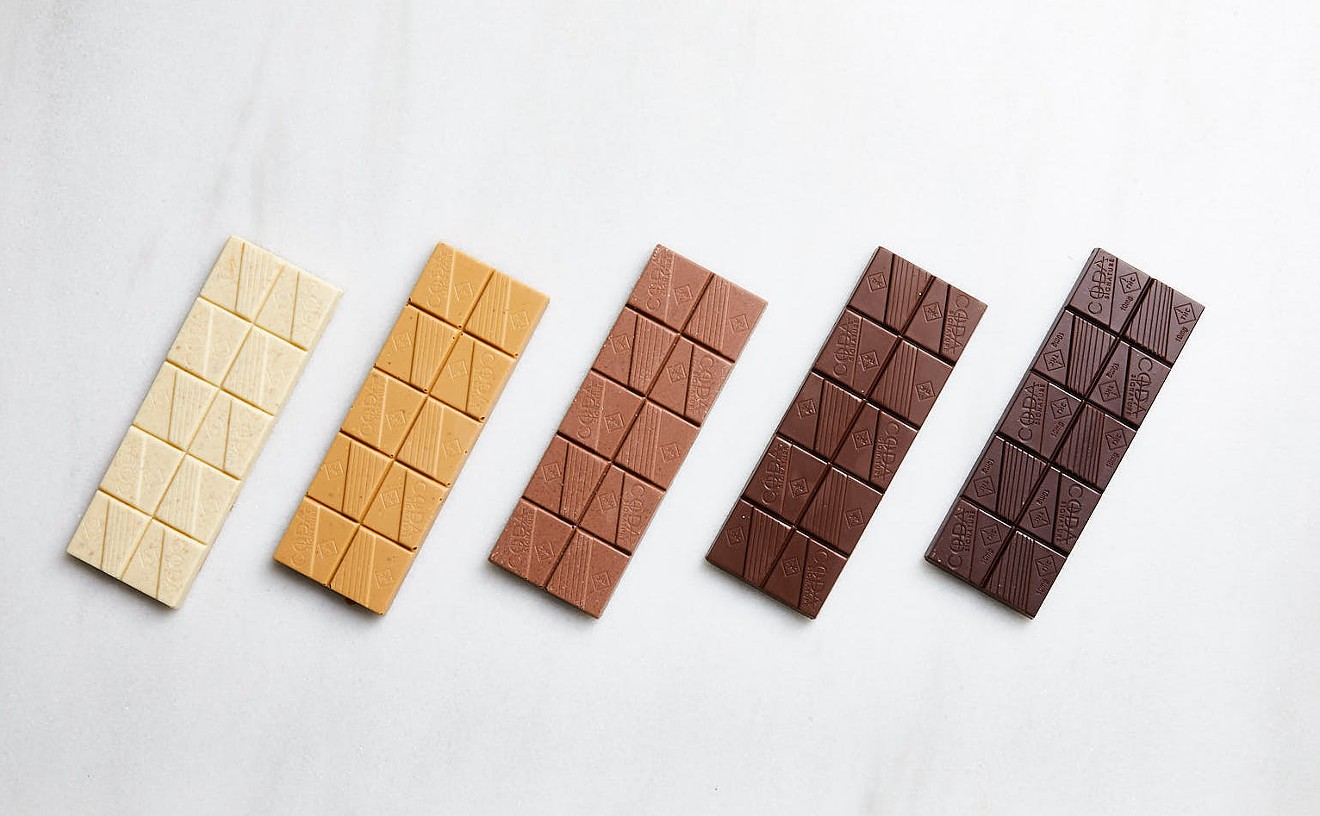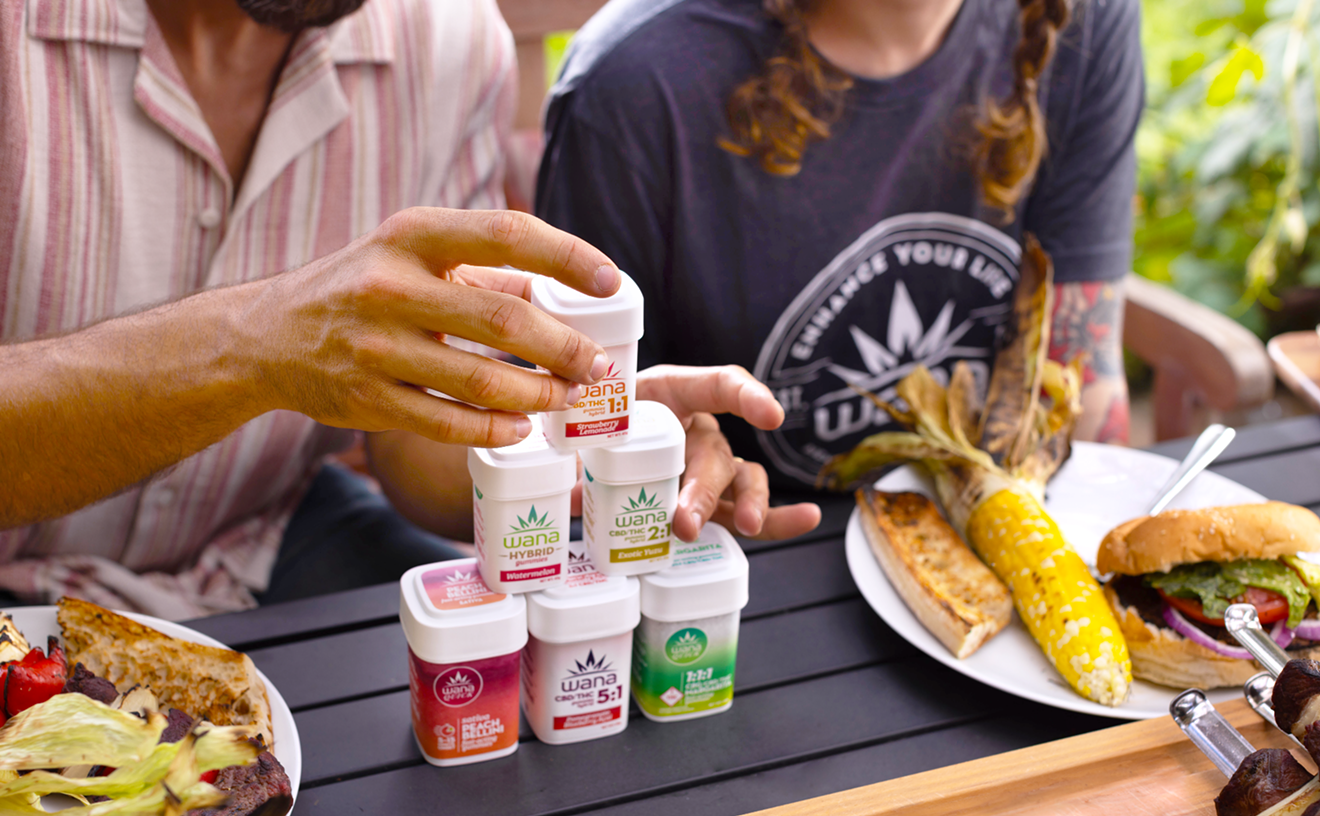Even before Colorado allowed the first sale of recreational marijuana in January 2014, people had lots of questions about what was in store for the state. To answer those questions, we created our weekly Ask a Stoner column. But some queries demand more time and attention, including this one, which we received last fall from Michael B: “Could you explain the differences — and why I should care about them — between budder, crumble, shatter, CO2 oil, rosin, live resin, bubble hash and sift?”
This question pointed up one of the major developments on the recreational pot scene: There used to be just a few varieties of concentrates, and now there are many, many more. (So many, in fact, that we just decided to update this response to Michael B's question.) Most budtenders are good at explaining the differences among them, but the majority of us aren’t comfortable listening to fifteen minutes of pot talk while those waiting in line get more and more impatient. So for future reference, here’s a map around the concentrate world that you can study while you’re waiting at the pot shop.
Budder
Budder, a wax-concentrate variety, is one of the most popular forms of concentrates in Colorado dispensaries right now. Typically extracted with butane or CO2, budder is made by using a chemical solvent to “blast” through marijuana to extract the THC, which is then “purged” with heat and air pressure to remove the solvent. The same broad process is used to create shatter and crumble wax, but the results are very different.
Budder wax is made when the extracted cannabinoids begin to crystalize after being agitated during the extraction process. By purging it at a higher temperature or whipping it like a batter in the middle or at the end of purging, a shatter-like concentrate can turn into the waxy substance that many of us dab today. Delicately but intently whipping the concentrate and maintaining a specific purging process can create beautiful, fluffy varieties of budder — but it doesn’t make it more potent.
Note: I wouldn’t recommend trying any of this at home. Butane and all explosive solvents are banned from home marijuana extraction in Colorado.
Crumble
Crumble wax is made with a procedure very similar to those that create shatter and budder, but the pre-purged oils used for crumble generally have more moisture, a different temperature and a thicker consistency, which help create the wax’s crumbling, cheese-like body after the purging process. A popular way to make wax into crumble is purging for a longer time at a lower heat, which preserves more terpenes and makes for a better-tasting concentrate.
Crumble wax is difficult to handle, so it’s often a less desired concentrate than shatter and budder, but it’s still the preferred option of many tokers. Although its loose structure isn’t suited for dabbing, like stickier budders and shatters, shaving bits of crumble works well for portable vaporizer coils and topping bowls of flower.
Shatter
Shatter is the most popular form of concentrate on dispensary shelves today, thanks largely to its looks, which draw people in so much that art shows feature sculptures made exclusively from the stuff. When made with butane, shatter’s extraction process is nearly the same as that of the wax varieties, but blasters have to make sure that the oil doesn’t get agitated and crystalize, which will change it from translucent to opaque — essentially turning the clear shatter into a cloudy wax.
Like wax, shatter can come in multiple consistencies. The sappier, gooier variety is run with decarboxylated (activated) THC, which is in oil form at room temperature. Sappier shatter can also have more CBDs and terpenes than the brittle stuff, making for a better smell and taste if purged correctly. A common misconception regarding shatter is that the clearer it is, the more THC there is — but that’s not always the case. Tests done by a Seattle cannabis lab for a Leafly study showed the clearest shatter tested was no more potent than its murkier counterparts, and it had higher amounts of solvents left over, making it more dangerous to inhale. Still, one of the things that make shatter and crumble carry the risks of leftover solvents is one of the reasons that potheads love them: The concentration of terpenes can bring a flavor that most CO2 concentrates can’t carry over after extraction.
Shatter’s harder composition makes it preferable for dabbing and vaporizers, though I personally enjoy putting a speckle of it on top of a bong snapper for an intense hit.
CO2 Oil
Although most commonly available in the form of a stickier, thinner oil than butane, CO2 concentrates can come in similar, if not the same, forms as the waxes and shatters run with butane. However, the six-figure machines that produce commercial CO2 concentrates produce them as oils, and it doesn’t make financial sense to change that for a newer form, so you probably won’t find much variety in the CO2 market unless you want to do some at-home purging. CO2 is preferred by a number of hash-heads because it carries no residual solvents and is nonflammable — and you can’t discount peace of mind when dabbing a strong sativa like Sour Diesel.
Still, when it comes to popularity, CO2 remains a second-place solvent at best, for a number of reasons, including how much easier and cheaper it is for extractors to use butane methods. Another upside for butane-run concentrates is the amount of terpenes they keep. Although some methods of super-critical fluid extraction done with CO2 extraction can keep the level of terpenes high, most of the CO2 oils you’ll find today don’t have much flavor. For easier application, CO2 oil is usually available in pre-filled vaporizer cartridges and syringes.
Live Resin
Live resin concentrates are made with the same extraction methods as those listed above, but live resin carries more intense, complex smells and flavors than traditional waxes, shatters and oils. Why? Instead of extracting from dried trim or cured buds, live resin is run with plants that are cryogenically frozen right after harvest — preserving oils, cannabinoids and terpenes that are generally lost during the curing and aging processes.
Although it is possible to make live resin with CO2 extraction, most, if not all, varieties that you’ll see in dispensaries are run with butane, shatter being the most popular. Live resin’s strong flavor profiles give it a higher price tag than other concentrates, so it’s a rare treat for most potheads. But pre-filled, live-resin vaporizer cartridges are starting to emerge on the commercial side, so it might become more prevalent in the future.
Rosin
Probably the newest variety of concentrate on this list, rosin has quickly risen in popularity on the underground scene because of how easy it is to make. Producing rosin at home only requires some nugs, a hair straightener and parchment paper. The heat and pressure of the hair straightener pushes the resin glands out of the buds onto the paper, leaving pools of THC oil that produce potent dabs.
The solvent-less concentrate has also become popular in pot shops, though they’re using industrial presses much bigger than a hair straightener. Commercial rosin is usually sticky and brittle, like some loosely bodied shatter, making it more difficult to play with. Still, the comfort of dabbing a solvent-less concentrate is hard to ignore.
Bubble Hash
The grandaddy of concentrates for the older crowd, bubble hash has sadly begun to wane in popularity as stronger concentrates with more advanced technology take over dispensary shelves. As with butane, CO2 and rosin extraction, making bubble hash involves separating THC from plant matter — but instead of using a solvent like butane or CO2, this process uses ice water. The most common way to make bubble hash is by putting the marijuana in mesh bags and then filtering a mixture of the plant matter, ice and water through them until a poopy substance collects at the bottom. After it dries, you have bubble hash.
Bubble hash can be smoked in a pipe by itself, crumbled over a bowl or — my personal favorite — rolled into bars and mixed into joints. Although not as expensive as the concentrates listed above, bubble hash is now a rare find in dispensaries. The streets are a different story, though: Because it doesn’t require an explosive solvent and can be made with household appliances such as buckets or a washing machine, bubble hash remains relevant on the bootleg market.
Sift
More commonly known as kief, sift is a very basic form of cannabis concentrate with very intense results. It’s made by sifting dried flower over mesh screens and collecting the trichomes at the bottom. Despite not being bonded like hash, sift is easy to use over bowls, in vaporizers and as a garnish for joints. Some shops even make “live sift,” which is sift made with the same frozen plant matter as live resin, giving it a tastier, smoother hit than traditional kief.
Because of its lower profit margins and potency compared to solvent extracts, sift is harder to find nowadays than it was in years past, but you can still collect your own at home with a filtered grinder or kief box.
Caviar
Caviar goes by a few different names, with moon rocks being the most popular alternative, but they all mean the same general product. Dispensaries take regular buds, infuse them with hash oil, then roll them once more in kief. Some sacrilegious pot shops will skip the hash-oil step, but that's not caviar – that's a disgrace. Although the kief can get a little messy once you try to break it up, caviar is the neapolitan delicacy the weed world needed. It's not technically a concentrate because of the flower base, but it can get you just as high as any dab will. Looking like something Marvin the Martian smokes doesn't hurt, either.
Distillate
Distillates are made through a process called molecular distillation. Distilling hash requires taking winterized concentrates — butane or CO2 hash oil refined with alcohol or ethanol and then chilled at extreme temperatures — and then distilling them to concentrate the THC further. Commercial extractors use a machine called a “wiped film evaporator,” which takes advantage of the different boiling points in cannabinoids to thermally separate them.
The process is repeated to remove any impurities, such as leftover solvents or lipids, in the concentrate. The result: a clear, odorless concentrate virtually free of solvents. Distillation can take BHO or CO2 oil with a 70 to 85 percent THC potency and refine it to upwards of 95 percent.
Terp Sauce
Terpenes are lost during the THC distillation process because the THC is separated from virtually every other compound, leaving an odorless, tasteless concentrate. However, terpenes can be extracted from flower and hash, too, and that's where terp sauce comes in.
Terp sauce is THC distillate with extracted terpenes added. The terpenes are usually from cannabis, so all of your favorite pot flavors and scents can be added to the concentrate without it tasting like an imitation. Distillates are already expensive enough, though, and terp sauce costs even more (upwards of $60 per gram) because of the extra work involved.
Have a question for our Stoner? E-mail [email protected] or call our potline at 303-293-2222.
[
{
"name": "Air - MediumRectangle - Inline Content - Mobile Display Size",
"component": "12017618",
"insertPoint": "2",
"requiredCountToDisplay": "2"
},{
"name": "Editor Picks",
"component": "17242653",
"insertPoint": "4",
"requiredCountToDisplay": "1"
},{
"name": "Inline Links",
"component": "18838239",
"insertPoint": "8th",
"startingPoint": 8,
"requiredCountToDisplay": "7",
"maxInsertions": 25
},{
"name": "Air - MediumRectangle - Combo - Inline Content",
"component": "17261320",
"insertPoint": "8th",
"startingPoint": 8,
"requiredCountToDisplay": "7",
"maxInsertions": 25
},{
"name": "Inline Links",
"component": "18838239",
"insertPoint": "8th",
"startingPoint": 12,
"requiredCountToDisplay": "11",
"maxInsertions": 25
},{
"name": "Air - Leaderboard Tower - Combo - Inline Content",
"component": "17261321",
"insertPoint": "8th",
"startingPoint": 12,
"requiredCountToDisplay": "11",
"maxInsertions": 25
}
]











